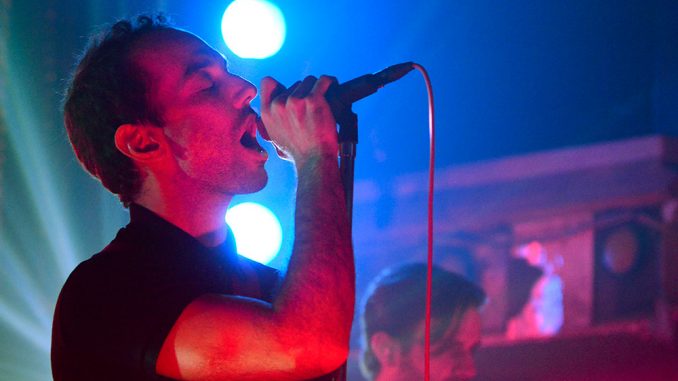
Albert Hammond Jr., the 33-year-old guitarist of The Strokes, has recently taken up scuba diving.
Attracted to the sensation of being underwater and the painstaking hours it takes to master, it’s an activity he became enamored with after first trying it while on vacation.
It’s also a hobby that’s vastly different than how he used to spend his recreational time.
In 2009, while in the midst of recording “Angles,” the fourth Strokes record, Hammond Jr. entered a rehab facility for a litany of drug issues, including but not limited to cocaine, heroin and ketamine.
“When you first get out, you kind of stay in this stage of self-pity or you feel a lot of guilt for the things that you did, and in that process you realize that you have time,” Hammond Jr. said. “So all of a sudden, you have this time when you’d normally be doing this stuff when your brain’s kinda coming back. So it’s fun for me, for my personality – it’s fun to find things that challenge me and new things that I can learn, and be good at.”
Also, Hammond Jr. seems to relish the opportunity to slow things down a bit.
“You know, you’re so used to instant gratification when you’re doing drugs and when you stop the delay of it, it’s – doing stuff that takes time, like getting better at guitar. And you get a good feeling from it, and it takes time, it takes work.”
Now four years sober, Hammond Jr. has pumped out a steady stream of new music. In addition to contributing to two Strokes releases, including “Comedown Machine” which was released earlier this year, he’s continued his solo career that began in 2006.
His latest outing “AHJ,” an EP and the third record in the Albert Hammond Jr. catalogue was released via Cult Records, the label owned by friend and Strokes bandmate Julian Casablancas.
“It really just felt like when we first met again,” Hammond Jr. said. “When I met him before I joined the band we moved in together and lived together for seven years. So we had this dialogue of just like roommates. So being on his label kind of feels like the same way. And then there’s excitement because we’re both doing something new that [can] fail but can also succeed.”
Rife with quirky, twinkling guitar licks, Hammond Jr.’s solo project retains all the offbeat zaniness that he popularized with The Strokes. Decidedly different from The Strokes, however, is the fact that he steps up to the mic and fronts the band. This is a challenge he said he faced with little apprehension.
The five song EP “AHJ” which was released on Oct. 8, has had a heavily emphasis on visuals. Thus far, he’s released a pair of music videos – one for album opener “St. Justice” and one for “Carnal Cruise.” The former is shot in his apartment and sees Hammond Jr. go through all the facets of a relationship, including the breakup and a hefty makeout session, in a brief three minutes and three seconds, while the latter, which was described by Hammond Jr. as “trippy and nightmarishy,” features Hammond Jr. taking a stroll through the woods amidst an excessive haze of colored smoke. Also in the works are an additional two videos to be shot in Europe.
Post rehab, Hammond Jr. had a brief lapse of creativity. However, he feels that he’s come back with fervor. Calling the recent material that he created with The Strokes, as well as for his latest record “AHJ” some of his best material he’s ever written, Hammond Jr. has found himself in a place of confidence. He largely attests this to coming out of the other side of an ugly struggle with drugs.
“There was all this that happened, and I reached a point and then after a year or two of not really writing, different stuff started to come out, including cool stuff on both Strokes records,” Hammond Jr. said. “And then I felt like it was my best stuff. The only thing I can attribute to being in this place is working hard on myself, and figuring things out.”
But for Hammond Jr., drug addiction was more of a brief detour then a final destination.
“It’s like an upside down pyramid; drugs are just the first thing,” Hammond Jr. said. “It’s not like it’s not important, but it’s very small compared to what you’re trying achieve later on. It’s the one step you have to do to start the other blocks, but it’s very tiny on the scope of things. Doing [drugs], that’s had some kind of effect. The girl you’re with, your friends, it all has an effect on you. And music is just a picture of that time or where you feel like you’re at.”
David Zisser can be reached at zisserd@temple.edu.


Be the first to comment